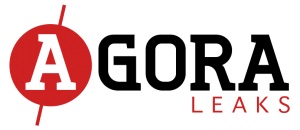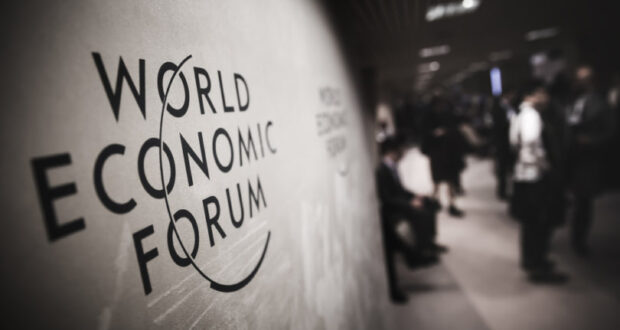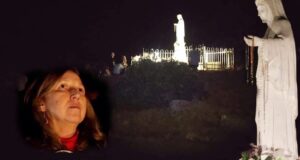مديرة الاتصالات العالمية في الأمم المتحدة ميليسا فليمنغ (Melissa Fleming): تجنيد 110.000 متطوع معلوماتي، بمثابة “مستجيبين رقميين ضدّ “المعلومات المضللة عبر الإنترنت.
مايكل نيفراداكيس Ph.D ، TheDefender – نشر المنتدى الاقتصادي العالمي هذا الشهر مقالاً يدعو إلى نظام رقابة على الإنترنت مدعوم بمزيج من الذكاء الاصطناعي والبشري اقترح أحد النقاد أنه من شأنه “عولمة” “البحث عن التفكير الخاطئ”.
تحذيرًا من “ضرر عالم الإنترنت المظلم”، نشر المنتدى الاقتصادي العالمي (WEF) هذا الشهر (آب 2022) مقالًا يدعو إلى “حل” “إساءة الاستخدام عبر الإنترنت” الذي يمكن أن يكون مدعومًا بالذكاء الاصطناعي (AI) و ذكاء بشري.
الاقتراح القائم على الذكاء الاصطناعي، يستند على رقابة تلقائية على ما وصفوه “معلومات مُضللة” و “خطاب كراهية” للتغلب على “إساءة معاملة الأطفال والاحتيال” عبر الإنترنت..
وفقًا لمؤلف المقال ، إنبال جولدبرجر (Inbal Goldberger)، فإن “فرق الثقة والأمان” البشرية وحدها ليست قادرة تمامًا على مراقبة مثل هذا المحتوى عبر الإنترنت.
Goldberger هو نائب رئيس ActiveFence Trust & Safety ، وهي شركة تقنية مقرها في مدينة نيويورك وتل أبيب تدعّي أنها “تجمع تلقائيًا البيانات من ملايين المصادر وتطبق الذكاء الاصطناعي السياقي لتعزيز الثقة وعمليات السلامة..”
بدلاً من الاعتماد فقط على فرق الإشراف البشري، يقترح Goldberger نظامًا قائمًا على “ذكاء منسق من قِبل الإنسان ومتعدد اللغات وخارج النظام الأساسي” – بعبارة أخرى ، المدخلات المقدمة من مصادر بشرية “خبيرة” والتي ستنشئ بعد ذلك “مجموعات تعلم” من شأنه تدريب الذكاء الاصطناعي على التعرف على المحتوى الضار أو الخطير المزعوم.
سيتمّ جمع هذه “المعلومات الذكية خارج النظام الأساسي” – التعلم الآلي أكثر من الذكاء الاصطناعي في حد ذاته ، وفقًا لديدي رانكوفيتش من ReclaimTheNet.org – من “ملايين المصادر” ثم يتم تجميعها ودمجها قبل استخدامها في “قرارات إزالة المحتوى” من جانب “منصات الإنترنت”.
ووفقًا لجولدبيرجر ، فإن النظام سوف يكمل “الاكتشاف الآلي الأكثر ذكاءً بالخبرة البشرية” وسيسمح بإنشاء “ذكاء اصطناعي يحتوي على ذكاء بشري مدمج فيه”.
وهذا بدوره سيوفر الحماية ضد “الفاعلين المتقدمين بشكل متزايد الذين يسيئون استخدام المنصات بطرق فريدة”.
أوضح جولدبيرجر: “لن يتمكن الخبير البشري وحده في منطقة معينة أوروبا مثلاً من التعرف على المحتوى الضارّ في الهند أو روايات المعلومات المضللة في كينيا”.
ومع ذلك، “من خلال الجمع الفريد بين قوة التكنولوجيا المبتكرة ، وجمع المعلومات الاستخبارية خارج النظام الأساسي ، وبراعة خبراء الموضوع الذين يفهمون كيفية عمل الجهات الفاعلة في مجال التهديد ، يمكن أن يصل الكشف المحسّن عن إساءة الاستخدام عبر الإنترنت إلى دقة شبه مثالية” لأن مجموعات التعلم هذه ” قال غولدبرغر “للذكاء الاصطناعي بمرور الوقت.
في تحليله للشكل الذي قد يبدو عليه اقتراح Goldberger في الممارسة العملية ، أوضح المدون Igor Chudov كيف يتم مراقبة المحتوى على وسائل التواصل الاجتماعي اليوم على أساس كل منصة على حدة.
على سبيل المثال ، ينظر مشرفو محتوى Twitter فقط إلى المحتوى المنشور على هذا النظام الأساسي المحدد ، ولكن ليس في محتوى المستخدم المنشور خارج Twitter.
جادل شودوف بأن هذا هو السبب في أن المنتدى الاقتصادي العالمي يبدو أنه يدعم اقتراحًا “لتجاوز منصات الإنترنت الرئيسية ، من أجل جمع المعلومات الاستخبارية حول الأشخاص والأفكار في كل مكان آخر.”
كتب شودوف أن “مثل هذا النهج سيسمح لهم بمعرفة الشخص أو الفكرة بشكل أفضل على جميع المنصات الرئيسية في وقت واحد.”
إن “المعلومات الاستخباراتية” التي يجمعها النظام من “ملايين مصادره” ، وفقًا لتشودوف ، “تكتشف الأفكار التي لا تحبها” ، مما يؤدي إلى “إصدار قرارات إزالة المحتوى إلى أمثال Twitter و Facebook وما إلى ذلك. … تغيير كبير عن الوضع الراهن لكل منصة يقرر ما يجب فعله بناءً على الرسائل المنشورة على تلك المنصة المحددة فقط. “
وخلص شودوف إلى أنه بهذه الطريقة ، “يصبح البحث عن التفكير الخاطئ معولمًا”.
ردًا على اقتراح المنتدى الاقتصادي العالمي ، أشار موقع ReclaimTheNet.org إلى أنه “يمكن للمرء أن يبدأ في تمييز الحجة هنا… بمجرد الضغط على الشبكات الاجتماعية لبدء التحرك نحو” الرقابة الوقائية “.
افترض شودوف أن المنتدى الاقتصادي العالمي يروج للاقتراح لأنه “أصبح قلقًا قليلاً” حيث “أصبحت الآراء غير المعتمدة أكثر شيوعًا ، ولا يستطيع مراقبو الإنترنت مواكبة الملايين من الأشخاص الذين أصبحوا أكثر وعيًا وأكثر صوتًا”.
وفقًا لصحيفة Daily Caller ، “لم تحدد وثيقة المنتدى الاقتصادي العالمي كيف سيتم تحديد أعضاء فريق التدريب على الذكاء الاصطناعي ، أو كيف سيتم محاسبتهم أو ما إذا كان بإمكان الدول ممارسة ضوابط على الذكاء الاصطناعي.”
في إخلاء المسؤولية المصاحب لمقال Goldberger ، طمأن المنتدى الاقتصادي العالمي الجمهور بأن المحتوى المعبر عنه في المقال “هو رأي المؤلف ، وليس المنتدى الاقتصادي العالمي” ، مضيفًا أنه “تمت مشاركة هذه المقالة على مواقع الويب التي تحرف المحتوى بشكل روتيني وتنشر معلومات مضللة “.
ومع ذلك ، يبدو أن المنتدى الاقتصادي العالمي منفتح على مقترحات مثل Goldberger. على سبيل المثال ، مقال نُشر في مايو 2022 على موقع المنتدى الاقتصادي العالمي يقترح “مجلس الرقابة” على Facebook كمثال على “نموذج حوكمة في العالم الحقيقي” يمكن تطبيقه على الحوكمة في metaverse.
وكما أشار شودوف ، فإن “الإشراف على محتوى الذكاء الاصطناعي يدخل مباشرة إلى نظام درجات الائتمان الاجتماعي للذكاء الاصطناعي.”
الأمم المتحدة ، بدعم من مؤسسة غيتس ، تهدف أيضًا إلى “كسر سلسلة المعلومات المضللة”
إن المنتدى الاقتصادي العالمي ليس الكيان الوحيد الذي يدعو إلى فرض المزيد من الرقابة الصارمة على المحتوى عبر الإنترنت و “المعلومات المضللة”.
على سبيل المثال ، أعلنت اليونسكو مؤخرًا عن شراكة مع Twitter والمفوضية الأوروبية والمؤتمر اليهودي العالمي ، مما أدى إلى إطلاق حملة #ThinkBeforeSharing ، من أجل “وقف انتشار نظريات المؤامرة”.
وفقا لليونسكو:
أثار جائحة كوفيد -19 ارتفاعًا مقلقًا في المعلومات المضللة ونظريات المؤامرة.
يمكن أن تكون نظريات المؤامرة خطيرة: فهي غالبًا ما تستهدف الفئات الضعيفة وتميز ضدها ، وتتجاهل الأدلة العلمية وتستقطب المجتمع مع عواقب وخيمة. هذا يحتاج إلى التوقف.
قالت المديرة العامة لليونسكو ، أودري أزولاي:
تسبب نظريات المؤامرة ضررًا حقيقيًا للناس وصحتهم وسلامتهم الجسدية أيضًا. إنها تضخّم المفاهيم الخاطئة حول الوباء وتضفي الشرعية عليها ، وتعزز الصور النمطية التي يمكن أن تغذي العنف والأيديولوجيات المتطرفة العنيفة.
قالت اليونسكو إن الشراكة مع Twitter تُعلم الناس أن الأحداث التي تحدث في جميع أنحاء العالم لا يتم “التلاعب بها سراً وراء الكواليس من قبل قوى قوية ذات نوايا سلبية”.
أصدرت اليونسكو إرشادات حول ما يجب القيام به في حالة مواجهة المرء لـ “منظّر المؤامرة” عبر الإنترنت: يجب على المرء أن “يتفاعل” فورًا عن طريق نشر رابط ذي صلة بـ “موقع التحقق من الحقائق” في التعليقات.
كما تقدم اليونسكو المشورة للجمهور في حالة مواجهة شخص ما لـ “منظّر المؤامرة” في الجسد. في هذه الحالة ، يجب على الفرد تجنب الجدل ، حيث “يمكن اعتبار أي حجة كدليل على أنك جزء من المؤامرة وتعزيز هذا الاعتقاد”.
توفر حملة #ThinkBeforeSharing مجموعة من الرسوم البيانية والمواد المصاحبة التي تهدف إلى شرح ماهية “نظريات المؤامرة” وكيفية التعرف عليها وكيفية الإبلاغ عنها وكيفية الرد عليها على نطاق أوسع.
وفقًا لهذه المواد ، تشترك نظريات المؤامرة في ستة أشياء ، منها:
- “مؤامرة سرية مزعومة”.
- “مجموعة من المتآمرين”.
- “الدليل” الذي يبدو أنه يدعم نظرية المؤامرة “.
- الإيحاءات التي تدعي “زوراً” أن “لا شيء يحدث بالصدفة وأنه لا توجد مصادفات” ، وأن “لا شيء على ما يبدو وكل شيء متصل”.
- يقسمون العالم إلى “جيد أو سيء”.
- يكبدون الناس والجماعات كبش فداء.
لا ترفض اليونسكو تمامًا وجود “نظريات المؤامرة” ، بل تعترف بدلاً من ذلك بأن “المؤامرات الحقيقية الكبيرة والصغيرة موجودة”.
ومع ذلك ، تدعي المنظمة أن مثل هذه “المؤامرات” “غالبًا ما تتمحور حول أحداث فردية قائمة بذاتها ، أو فرد مثل اغتيال أو انقلاب” وتكون “حقيقية” فقط إذا “اكتشفتها وسائل الإعلام”.
بالإضافة إلى المنتدى الاقتصادي العالمي واليونسكو ، تبنى مجلس حقوق الإنسان التابع للأمم المتحدة في وقت سابق من هذا العام “خطة عمل لمعالجة المعلومات المضللة”.
تؤكد “خطة العمل” ، التي رعتها الولايات المتحدة والمملكة المتحدة وأوكرانيا واليابان ولاتفيا وليتوانيا وبولندا ، على “الدور الأساسي للحكومات في مواجهة الروايات الكاذبة” ، مع الإعراب عن القلق بشأن:
التأثير السلبي المتزايد والبعيد المدى على التمتع بحقوق الإنسان وإعمالها نتيجة الإنشاء المتعمد لمعلومات كاذبة أو تم التلاعب بها ونشرها بقصد خداع وتضليل الجماهير ، إما لإحداث ضرر أو لتحقيق مكاسب شخصية أو سياسية أو مالية.
حتى الدول التي لم تصادق رسميًا على خطة مجلس حقوق الإنسان أعربت عن مخاوفها بشأن “التضليل” على الإنترنت.
على سبيل المثال ، حددت الصين مثل هذه “المعلومات المضللة” على أنها “عدو مشترك للمجتمع الدولي”.
في وقتٍ سابق بمبادرة من الأمم المتحدة وبالشراكة مع المنتدى الاقتصادي العالمي ، قاموا “بتجنيد 110.000 متطوع معلوماتي”ليكونون ، على حد تعبير مديرة الاتصالات العالمية في الأمم المتحدة ميليسا فليمنغ ، بمثابة “المستجيبين الرقميين الأوائل” لـ “المعلومات المضللة عبر الإنترنت”.
تم الإعلان عن مبادرة #PledgeToPause التابعة للأمم المتحدة ، على الرغم من تداولها مؤخرًا كتطور جديد على وسائل التواصل الاجتماعي ، في نوفمبر 2020 ، ووصفتها الأمم المتحدة بأنها “أول حملة عالمية لتغيير السلوك بشأن المعلومات المضللة”.
الحملة جزء من مبادرة أوسع للأمم المتحدة ، “تم التحقق منها” ، والتي تهدف إلى تجنيد المشاركين لنشر “محتوى تم التحقق منه محسّنًا للمشاركة الاجتماعية ،” ينبع مباشرة من إدارة الاتصالات بالأمم المتحدة.
وقالت فليمنغ في ذلك الوقت إن الأمم المتحدة كانت تعمل أيضًا “مع منصات التواصل الاجتماعي للتوصية بالتغييرات” من أجل “المساعدة في كسر سلسلة المعلومات المضللة”.
لا تزال كل من حملة “Verified” و #PledgeToPause نشطة حتى وقت كتابة هذه السطور.
يتم تشغيل مبادرة “التحقق” بالاشتراك مع Purpose ، وهي مجموعة ناشطة تعاونت مع مؤسسة Bill & Melinda Gates Foundation ومؤسسة Rockefeller و Bloomberg Philanthropies ومنظمة الصحة العالمية ومبادرة Chan Zuckerberg و Google و Starbucks.
منذ عام 2019 ، دخلت الأمم المتحدة في شراكة استراتيجية مع المنتدى الاقتصادي العالمي على أساس ستة “مجالات تركيز” ، أحدها “التعاون الرقمي”.
World Economic Forum proposes globalized plan to police online content using artificial intelligence
Michael Nevradakis Ph. D.,TheDefender – The World Economic Forum this month published an article calling for an online censorship system powered by a combination of artificial and human intelligence that one critic suggested would ‘globalize’ the ‘search for wrongthink.’
– Warning about a “dark world of online harms” that must be addressed, the World Economic Forum (WEF) this month published an article calling for a “solution” to “online abuse” that would be powered by artificial intelligence (AI) and human intelligence.
The proposal calls for a system, based on AI, that would automate the censorship of “misinformation” and “hate speech” and work to overcome the spread of “child abuse, extremism, disinformation, hate speech and fraud” online.
According to the author of the article, Inbal Goldberger, human “trust and safety teams” alone are not fully capable of policing such content online.
Goldberger is vice president of ActiveFence Trust & Safety, a technology company based in New York City and Tel Aviv that claims it “automatically collects data from millions of sources and applies contextual AI to power trust and safety operations of any size.”
Instead of relying solely on human moderation teams, Goldberger proposes a system based on “human-curated, multi-language, off-platform intelligence” – in other words, input provided by “expert” human sources that would then create “learning sets” that would train the AI to recognize purportedly harmful or dangerous content.
This “off-platform intelligence” – more machine learning than AI per se, according to Didi Rankovic of ReclaimTheNet.org – would be collected from “millions of sources” and would then be collated and merged before being used for “content removal decisions” on the part of “Internet platforms.”
According to Goldberger, the system would supplement “smarter automated detection with human expertise” and will allow for the creation of “AI with human intelligence baked in.”
This, in turn, would provide protection against “increasingly advanced actors misusing platforms in unique ways.”
“A human moderator who is an expert in European white supremacy won’t necessarily be able to recognize harmful content in India or misinformation narratives in Kenya,” Goldberger explained.
However, “By uniquely combining the power of innovative technology, off-platform intelligence collection and the prowess of subject-matter experts who understand how threat actors operate, scaled detection of online abuse can reach near-perfect precision” as these learning sets are “baked in” to the AI over time, Goldberger said.
In his analysis of what Goldberger’s proposal might look like in practice, blogger Igor Chudov explained how content policing on social media today occurs on a platform-by-platform basis.
For example, Twitter content moderators look only at content posted to that particular platform, but not at a user’s content posted outside Twitter.
Chudov argued this is why the WEF appears to support a proposal to “move beyond the major Internet platforms, in order to collect intelligence about people and ideas everywhere else.”
“Such an approach,” Chudov wrote, “would allow them to know better what person or idea to censor – on all major platforms at once.”
The “intelligence” collected by the system from its “millions of sources” would, according to Chudov, “detect thoughts that they do not like,” resulting in “content removal decisions handed down to the likes of Twitter, Facebook, and so on … a major change from the status quo of each platform deciding what to do based on messages posted to that specific platform only.”
In this way, “the search for wrongthink becomes globalized,” concluded Chudov.
In response to the WEF proposal, ReclaimTheNet.org pointed out that “one can start discerning the argument here … as simply pressuring social networks to start moving towards ‘pre-emptive censorship.’”
Chudov posited that the WEF is promoting the proposal because it “is becoming a little concerned” as “unapproved opinions are becoming more popular, and online censors cannot keep up with millions of people becoming more aware and more vocal.”
According to the Daily Caller, “The WEF document did not specify how members of the AI training team would be decided, how they would be held accountable or whether countries could exercise controls over the AI.”
In a disclaimer accompanying Goldberger’s article, the WEF reassured the public that the content expressed in the piece “is the opinion of the author, not the World Economic Forum,” adding that “this article has been shared on websites that routinely misrepresent content and spread misinformation.”
However, the WEF appears to be open to proposals like Goldberger’s. For instance, a May 2022 article on the WEF website proposes Facebook’s “Oversight Board” as an example of a “real-world governance model” that can be applied to governance in the metaverse.
And, as Chudov noted, “AI content moderation slots straight into the AI social credit score system.”
UN, backed by Gates Foundation, also aiming to ‘break chain of misinformation’
The WEF isn’t the only entity calling for more stringent policing of online content and “misinformation.”
For example, UNESCO recently announced a partnership with Twitter, the European Commission, and the World Jewish Congress leading to the launch of the #ThinkBeforeSharing campaign, to “stop the spread of conspiracy theories.”
According to UNESCO:
The COVID-19 pandemic has sparked a worrying rise in disinformation and conspiracy theories.
Conspiracy theories can be dangerous: they often target and discriminate against vulnerable groups, ignore scientific evidence and polarize society with serious consequences. This needs to stop.
UNESCO’s director-general, Audrey Azoulay, said:
Conspiracy theories cause real harm to people, to their health, and also to their physical safety. They amplify and legitimize misconceptions about the pandemic, and reinforce stereotypes which can fuel violence and violent extremist ideologies.
UNESCO said the partnership with Twitter informs people that events occurring across the world are not “secretly manipulated behind the scenes by powerful forces with negative intent.”
UNESCO issued guidance for what to do in the event one encounters a “conspiracy theorist” online: One must “react” immediately by posting a relevant link to a “fact-checking website” in the comments.
UNESCO also provides advice to the public in the event someone encounters a “conspiracy theorist” in the flesh. In that case, the individual should avoid arguing, as “any argument may be taken as proof that you are part of the conspiracy and reinforce that belief.”
The #ThinkBeforeSharing campaign provides a host of infographics and accompanying materials intended to explain what “conspiracy theories” are, how to identify them, how to report on them and how to react to them more broadly.
According to these materials, conspiracy theories have six things in common, including:
– An “alleged, secret plot.”
– A “group of conspirators.”
– “‘Evidence’ that seems to support the conspiracy theory.”
– Suggestions that “falsely” claim “nothing happens by accident and that there are no coincidences,” and that “nothing is as it appears and everything is connected.”
– They divide the world into “good or bad.”
– They scapegoat people and groups.
UNESCO doesn’t entirely dismiss the existence of “conspiracy theories,” instead admitting that “real conspiracies large and small DO exist.”
However, the organization claims, such “conspiracies” are “more often centered on single self-contained events, or an individual like an assassination or a coup d’état” and are “real” only if “unearthed by the media.”
In addition to the WEF and UNESCO, the United Nations (UN) Human Rights Council earlier this year adopted “a plan of action to tackle disinformation.”
The “plan of action,” sponsored by the U.S., U.K., Ukraine, Japan, Latvia, Lithuania, and Poland, emphasizes “the primary role that governments have, in countering false narratives,” while expressing concern for:
The increasing and far-reaching negative impact on the enjoyment and realization of human rights of the deliberate creation and dissemination of false or manipulated information intended to deceive and mislead audiences, either to cause harm or for personal, political or financial gain.
Even countries that did not officially endorse the Human Rights Council plan expressed concerns about online “disinformation.”
For instance, China identified such “disinformation” as “a common enemy of the international community.”
An earlier UN initiative, in partnership with the WEF, “recruited 110,000 information volunteers” who would, in the words of UN global communications director Melissa Fleming, act as “digital first responders” to “online misinformation.”
The UN’s #PledgeToPause initiative, although recently circulating as a new development on social media, was announced in November 2020, and was described by the UN as “the first global behaviour-change campaign on misinformation.”
The campaign is part of a broader UN initiative, “Verified,” that aims to recruit participants to disseminate “verified content optimized for social sharing,” stemming directly from the UN communications department.
Fleming said at the time that the UN also was “working with social media platforms to recommend changes” to “help break the chain of misinformation.”
Both “Verified” and the #PledgeToPause campaign still appear to be active as of the time of this writing.
The “Verified” initiative is operated in conjunction with Purpose, an activist group that has collaborated with the Bill & Melinda Gates Foundation, the Rockefeller Foundation, Bloomberg Philanthropies, the World Health Organization, the Chan Zuckerberg Initiative, Google, and Starbucks.
Since 2019, the UN has been in a strategic partnership with the WEF based on six “areas of focus,” one of which is “digital cooperation.”
 Agoraleaks Agoraleaks
Agoraleaks Agoraleaks







